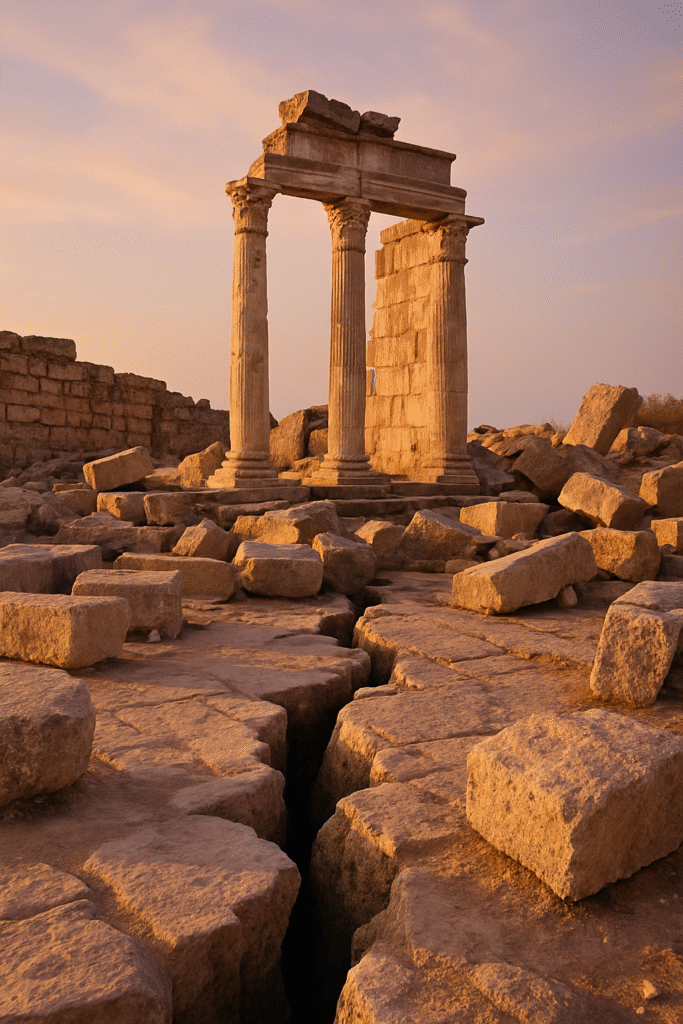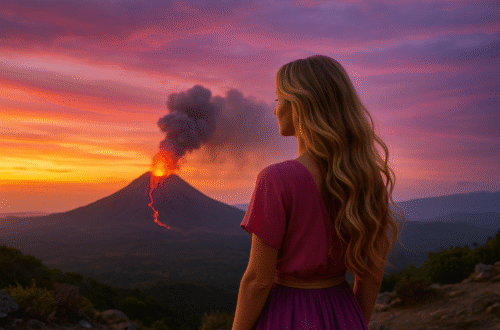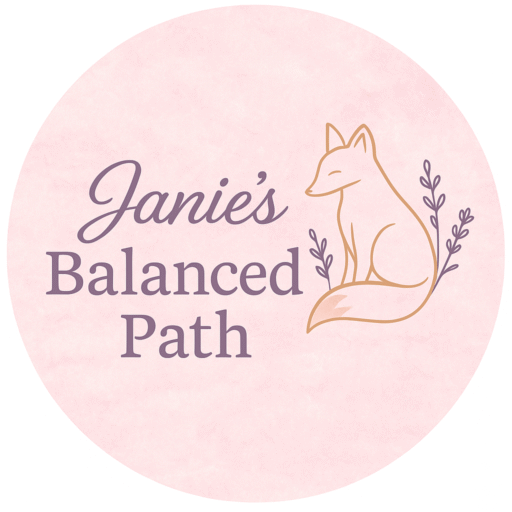
Tremor Legends: Unfolding the Stories of Earth’s Most Famous Quakes
Why Study Famous Earthquakes?
Studying famous earthquakes opens a window into both the past and the science of our planet’s powerful movements. These events are more than just geological phenomena; they are pivotal moments that have shaped societies, transformed cities and inspired global advancements in safety and understanding. For learners, exploring these seismic milestones provides an engaging way to connect education with real-world consequences and resilience.
One of the earliest recorded earthquakes took place in China in 1290, destroying towns in Hebei Province. However, the most globally recognised event often cited in textbooks is the Lisbon Earthquake of 1755. Striking on All Saints’ Day, this quake was followed by a tsunami and fires that devastated the city. Its impact on philosophy, science and architecture was immense. Enlightenment thinkers began to question divine intervention and instead explored natural causes, setting the foundation for modern earthquake science.
Moving to the 20th century, the 1906 San Francisco earthquake remains a classic case study. Estimated at a magnitude of 7.9, it ruptured over 400 kilometres of the San Andreas Fault. Beyond the immense structural damage, the resulting fires consumed much of the city. The event led to advancements in urban planning and the development of the first modern seismographs in America, revolutionising the way earthquakes are measured and studied.
Japan’s 2011 Tōhoku earthquake is another powerful example. This magnitude 9.0 quake triggered a tsunami that overwhelmed coastal defences, leading to the Fukushima nuclear disaster. It was a tragic moment that demonstrated the intersection of natural and technological hazards. Yet, it also inspired a global conversation about preparedness and engineering resilience.
By examining these iconic quakes, students gain more than dates and data. They learn about the people affected, the cultures transformed and the lessons carved into history. The stories behind these events humanise the science, making earthquake education not only informative but deeply empathetic.
At Janie’s Balanced Path, we see famous earthquakes as storytelling tools that spark curiosity and emotional engagement. When learners explore the gravity of these moments, they connect with the past, appreciate the present and envision a safer future. Education becomes not just about facts, but about inspiring thoughtful, informed citizens who understand the value of seismic safety and awareness.
Ancient Disasters – Earthquakes Through Early History
Famous earthquakes are not solely a feature of modern times. History is rich with seismic catastrophes that reshaped ancient civilisations and left lasting impressions on collective memory. These ancient disasters, though less documented by modern science, are equally fascinating and educational. They offer insight into how early societies understood and responded to the natural world around them.
One of the most well-known early earthquakes is the destruction of the city of Helike in ancient Greece around 373 BCE. According to historical accounts, a massive tremor struck suddenly, followed by a tsunami that swallowed the entire city and its temple to Poseidon. Archaeological investigations have since revealed submerged ruins, validating these ancient narratives. This story offers learners a unique intersection of mythology and geology — showing how legends often contain elements of truth.
In 62 CE, a powerful earthquake shook the Roman city of Pompeii. Though not as catastrophic as the volcanic eruption of Vesuvius 17 years later, it severely damaged structures and was well recorded by contemporary writers like Seneca. This quake provides a valuable lens into Roman engineering, as subsequent rebuilding efforts incorporated lessons learned, even if those efforts would eventually be undone by natural forces.
Another early seismic legend is tied to the biblical account of the destruction of Jericho. Though its historical accuracy is debated, some scholars suggest that an earthquake could have contributed to the collapse of the city’s walls. Whether myth or reality, such stories reveal how ancient people often attributed seismic events to divine will, framing them as punishments or omens.
From the Eastern Mediterranean to South America, indigenous communities have long told stories of trembling earth and gods of destruction. In Incan mythology, Pachacuti was believed to control earthquakes, and rituals were performed to appease him. These beliefs shaped community behaviour and responses, influencing everything from settlement patterns to construction methods.
Teaching about these ancient earthquakes encourages learners to think critically about how knowledge evolves. At Janie’s Balanced Path, we embrace this exploration of both history and humanity. By looking at how ancient societies interpreted and adapted to seismic events, we offer students a broader cultural and scientific context — helping them appreciate that earthquake education is not just about the ground moving, but how people have always sought to understand and survive its motion.


Shocks of the Century – Earthquakes that Changed the World
The 20th and 21st centuries have witnessed some of the most devastating and transformative earthquakes in human history. These seismic events didn’t just leave physical scars; they reshaped communities, challenged governments and led to significant advancements in science and disaster preparedness. For students, exploring these famous earthquakes offers powerful lessons in resilience, technology and global interconnectivity.
One of the most studied modern quakes is the 1906 San Francisco earthquake. Occurring on April 18, it ruptured nearly 500 kilometres of the San Andreas Fault. The quake itself was destructive, but it was the fires that followed — fuelled by ruptured gas lines and hindered by broken water mains — that turned much of the city into ashes. Over 3,000 lives were lost, and nearly 80% of the city was destroyed. This disaster led to urban redesigns, stricter building codes and advancements in seismology, laying the foundation for modern earthquake preparedness in the West.
The 1960 Valdivia earthquake in Chile holds the title of the most powerful earthquake ever recorded, reaching a magnitude of 9.5. It caused a massive tsunami that travelled across the Pacific Ocean, affecting countries as far as Japan, New Zealand and the Philippines. The scale of this disaster emphasised the need for global tsunami warning systems and prompted international cooperation on seismic monitoring.
In 2004, the Indian Ocean earthquake and tsunami shocked the world. With a magnitude of 9.1, it struck off the coast of Sumatra and generated waves up to 30 metres high, claiming over 230,000 lives across 14 countries. This event became a turning point in global awareness of the need for disaster education, early warning systems and humanitarian response protocols.
Closer to recent memory, the 2010 Haiti earthquake and 2011 Tōhoku earthquake in Japan demonstrated how vulnerability and preparedness intersect. Haiti, with weak infrastructure and limited resources, suffered immense loss of life and prolonged recovery. Japan, despite its advanced systems, faced a complex crisis involving a nuclear plant. Both cases reinforced the message that while science can reduce risk, human factors remain critical.
At Janie’s Balanced Path, we explore these quakes not to dwell on disaster but to spotlight the lessons learned. They reveal how science, policy and empathy must work together — and how education can empower the next generation to build safer, more informed societies.
Earthquake Education in the Classroom – Learning from the Past
Teaching about famous earthquakes is not only a lesson in geology but also an opportunity to build historical context, critical thinking and emotional intelligence in students. Bringing these monumental events into the classroom breathes life into science and history, transforming them into real-world narratives with lasting relevance. At Janie’s Balanced Path, we champion creative, engaging ways to explore seismic history with learners of all ages.
One effective method is through storytelling. Recounting the 1906 San Francisco earthquake or the 2011 Tōhoku disaster as stories — with characters, settings and outcomes — allows students to empathise with the human experience behind the data. This emotional connection encourages deeper engagement and helps children remember important facts. Pairing stories with visual aids like maps, before-and-after photos and survivor accounts enhances the immersive experience.
Project-based learning is another powerful approach. Pupils might be asked to research a famous earthquake and present their findings in creative formats: posters, digital slideshows, newspaper reports or dioramas. These activities build research skills and encourage learners to take ownership of their knowledge. For example, a group project might involve recreating a tectonic map of the Pacific Ring of Fire and pinpointing major quakes.
Hands-on models also help students visualise earthquake mechanics. Using clay or cardboard, they can build their own models of tectonic plates, fault lines and affected buildings. Adding simulations with shake tables — even basic ones using jelly or rubber bands — makes learning fun and memorable while demonstrating structural resilience.
To link with broader educational goals, earthquake studies can integrate other subjects. In geography, students explore where and why earthquakes occur. In history, they examine the societal effects of famous quakes. In art, they might depict seismic scenes or design public awareness posters. English lessons can include writing survivor stories or emergency broadcast scripts.
Importantly, these activities also foster discussions about safety and preparedness. Learners consider how people respond to crises and what makes some communities more vulnerable than others. They gain insight into global inequality and the importance of humanitarian aid.
Through all this, Janie’s Balanced Path ensures that earthquake education is holistic, empowering and aligned with our brand values. It’s about learning from the past not only to understand it, but to shape a more informed, empathetic and resilient future.

Remembering and Preparing – The Lasting Legacy of Famous Earthquakes
Famous earthquakes leave more than just geological marks. They shape collective memory, influence public policy and drive innovation in building, planning and education. For students and communities alike, learning about these events reinforces the importance of preparation and resilience in the face of natural disasters. It transforms historical tragedy into proactive learning.
Many countries memorialise significant earthquakes as a way of honouring lives lost and reminding future generations of the need for vigilance. In Japan, annual drills mark the anniversary of the 2011 Tōhoku earthquake, with sirens and evacuation exercises carried out across the nation. In Italy, schools hold remembrance days for the 2009 L’Aquila quake, combining reflection with safety training. These practices demonstrate how memory and education go hand-in-hand in cultivating a culture of preparedness.
Famous quakes have also led to significant advances in engineering. In California, for instance, structures are now designed to sway rather than crack, with flexible joints and deep foundations that absorb shock. After the 1985 Mexico City earthquake, building regulations were overhauled to improve resistance. These advancements are rooted in lessons learned the hard way — a testament to the value of applying history to improve future outcomes.
Beyond the physical, these events shape how communities view vulnerability. They expose the social inequalities that influence survival — such as the quality of housing, access to emergency services and the robustness of infrastructure. Earthquake education becomes a bridge to discussions on justice, empathy and how we support one another during crises.
Janie’s Balanced Path encourages children to reflect on these themes through age-appropriate activities. They might write letters to imaginary survivors, create posters for community awareness or build models of earthquake-safe buildings. These tasks turn abstract concepts into personal experiences, empowering learners to feel not only informed but also capable.
As we educate about famous earthquakes, we are not simply recounting destruction. We are passing on a legacy of learning, adaptation and care. Earthquake history reminds us that while nature can be unpredictable, our response need not be. With knowledge, creativity and compassion, students are equipped not just to understand the past, but to help shape a safer, kinder future.


You May Also Like

Eruptive Wonders: The Power and Mystery of Volcanoes

Shaken Minds: Understanding Earthquakes with Empowered Awareness

